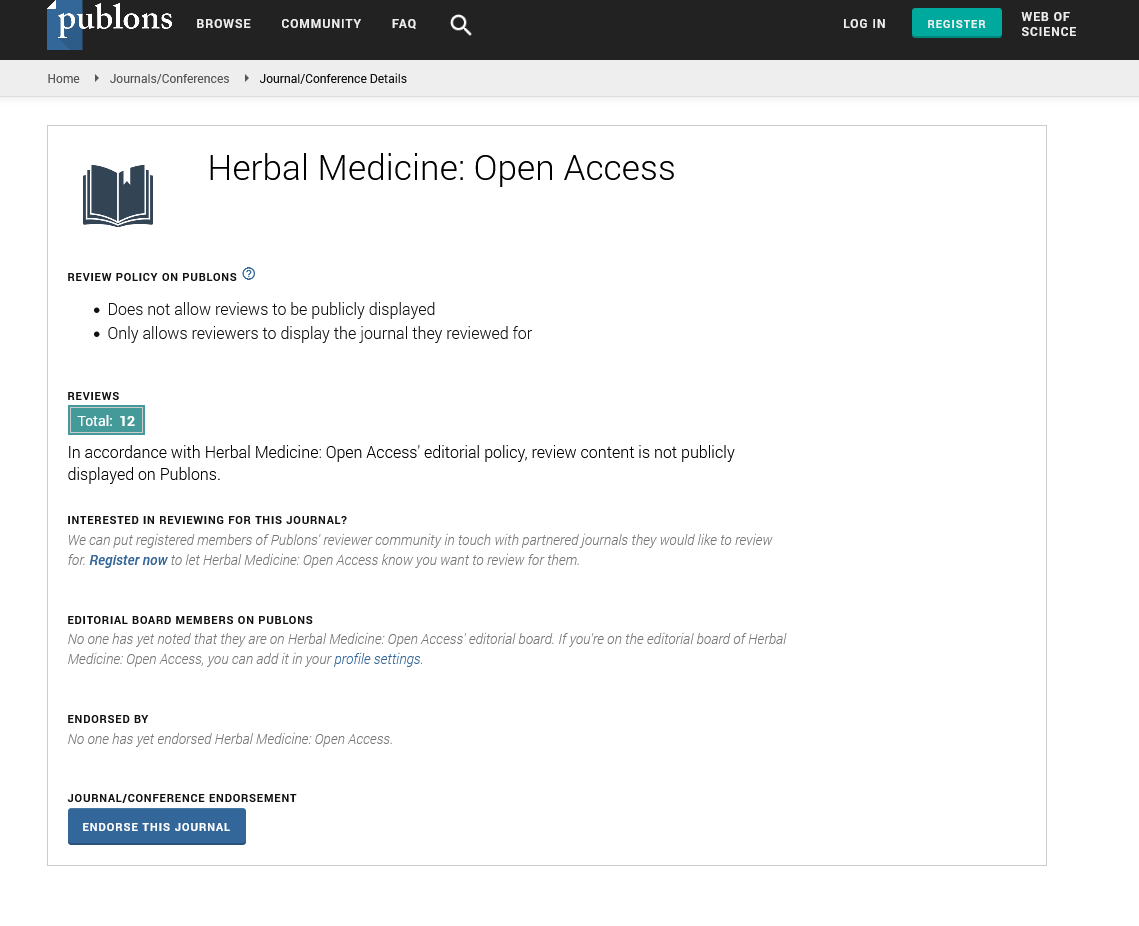Abstract
The Role of Traditional Medicine for Good Health and Well Being
Traditional, Complementary and Alternative Medicine words is commonly used in Gulf, Middle East, United States, Canada & Britain. World Health Organization (WHO) is already purposed WHO traditional medicine strategy: 2014-2023.The WHO traditional medicine strategy 2014–2023 was developed and launched in response to the World Health Assembly resolution on traditional medicine (WHA62.13). The strategy aims to support Member States in developing proactive policies and implementing action plans that will strengthen the role traditional medicine plays in keeping populations healthy. Addressing the challenges, responding to the needs identified by Member States and building on the work done under the WHO traditional medicine strategy: 2002–2005, the updated strategy for the period 2014–2023 devotes more attention than its predecessor to prioritizing health services and systems, including traditional and complementary medicine products, practices and practitioners. The WHO Traditional Medicine Strategy 2014-2023 will help health care leaders to develop solutions that contribute to a broader vision of improved health and patient autonomy. The strategy has two key goals: to support Member States in harnessing the potential contribution of T&CM to health, wellness and people centered health care and to promote the safe and effective use of T&CM through the regulation of products, practices and practitioners. These goals will be reached by implementing three strategic objectives: 1) building the knowledge base and formulating national policies; 2) strengthening safety, quality and effectiveness through regulation; and, 3) promoting universal health coverage by integrating T&CM services and self-health care into national health systems. WHO is published a report in 2019 that structured in five parts: national framework for traditional and complementary medicine (T&CM); product regulation; practices and practitioners; the challenges faced by countries; and finally the country profiles. Apart from the section on practices and practitioners the report is consistent with the format of the report of the first global survey in order to provide a useful comparison. The section on practices and practitioners which covers providers education and health insurance is a new section incorporated to reflect the emerging trends in T&CM and to gather new information regarding these topics at a national level. All new information received has been incorporated into individual country profiles and data graphs. The report captures the three phases of progress made by Member States; that is before and after the first WHO Traditional Medicine Strategy (1999-2005) from the first global survey to the second global survey (2005-2012) and from the second survey to the most recent timeline (2012-2018).Accordingly of WHO report all Members countries are trying for achieve United Nation Sustainable Development Goals (UN-SDGs) 2021-2030.
Author(s): Muhammad Amin Baig
Abstract | PDF
Share this

Google scholar citation report
Citations : 271
Herbal Medicine: Open Access received 271 citations as per google scholar report
Herbal Medicine: Open Access peer review process verified at publons
Abstracted/Indexed in
- Google Scholar
- JournalTOCs
- China National Knowledge Infrastructure (CNKI)
- Directory of Research Journal Indexing (DRJI)
- WorldCat
- Publons
- Secret Search Engine Labs
- Zenodo
Open Access Journals
- Aquaculture & Veterinary Science
- Chemistry & Chemical Sciences
- Clinical Sciences
- Engineering
- General Science
- Genetics & Molecular Biology
- Health Care & Nursing
- Immunology & Microbiology
- Materials Science
- Mathematics & Physics
- Medical Sciences
- Neurology & Psychiatry
- Oncology & Cancer Science
- Pharmaceutical Sciences


